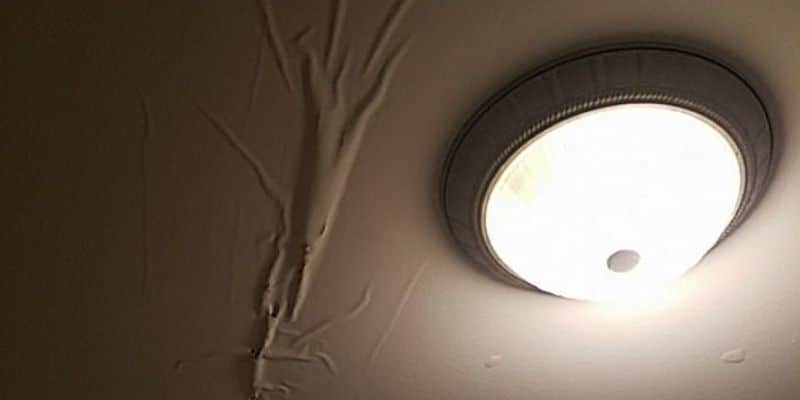Find Why Water Seepage in The House
Find Why Water Seepage in The House
Blog Article
Have you been in search of guidance about Common Water Leaks In House?

Leakages not just cause waste of water but can also cause unnecessary damage to your home as well as promote unwanted organic growth. However, water leaks might go undetected considering that the majority of the pipework in our home is concealed. By recognizing as well as looking for day-to-day circumstances that create leaks, you can secure your home from future leaks as well as unneeded damage. Today, we will consider six leak triggers that might be causing your pipelines to trickle.
Trespassing origins
Many water leakages begin outside the house instead than inside it. You may notice damp patches or sinkholes in your yard, and that may suggest that tree roots are invading water lines triggering water to permeate out.
Rusty water systems
As time passes by, your plumbing system ages and also deterioration such as rust may begin gnawing the pipes. This could be the root cause of staining or warping on your water pipes. This requires an examination with your plumber quickly. If our plumbing system is old, think about replacing the pipelines because they go to a greater danger of rust than the newer versions.
Faulty Pipe Joints
The factor at which your pipelines attach is often the weakest link in the waterline. Pipeline joints can degrade gradually, leading to water leakages. Unfortunately, the majority of pipe joints are not conveniently visible. If you have noisy pipes that make ticking or banging noises, especially when the warm water is switched on, your pipeline joints are probably under a lot of pressure. It is recommended to have your plumber evaluate your system yearly.
Instant temperature modifications.
Severe temperature level modifications in our pipelines can create them to broaden as well as get unexpectedly. This growth as well as tightening might trigger splits in the pipelines, specifically if the temperature level are listed below freezing.
Poor Water Connectors
At times, a leak can be caused by loose hose pipes and pipes that provide your devices. In instance of a water links leakage, you might observe water running directly from the supply line or puddles around your appliances.
Clogged Drains
Obstructed drains pipes could be bothersome and inconveniencing, but they can occasionally end up triggering an overflow bring about burst pipelines. Maintain getting rid of any products that might drop your drains that might clog them to prevent such inconveniences.
All the above are reasons for leaks yet not all water leaks arise from plumbing leaks; some leaks could originate from roofing system leakages. All leaks should be repaired right away to avoid water damage.
Leakages not only create waste of water however can likewise trigger unnecessary damages to your residence and promote undesirable organic growth. By recognizing and also looking for everyday scenarios that trigger leakages, you can secure your home from future leaks and unneeded damages. Today, we will look at six leakage triggers that might be creating your pipelines to drip.
At times, a leakage can be triggered by loose tubes as well as pipes that provide your devices. In case of a water links leakage, you might notice water running straight from the supply line or pools around your home appliances.
How To Check For Water Leak In Your Home
How To Check for Leaks
The average household's leaks can account for nearly 10,000 gallons of water wasted every year and ten percent of homes have leaks that waste 90 gallons or more per day. Common types of leaks found in the home are worn toilet flappers, dripping faucets, and other leaking valves. These types of leaks are often easy to fix, requiring only a few tools and hardware that can pay for themselves in water savings. Fixing easily corrected household water leaks can save homeowners about 10 percent on their water bills.
To check for leaks in your home, you first need to determine whether you're wasting water and then identify the source of the leak. Here are some tips for finding leaks:
Take a look at your water usage during a colder month, such as January or February. If a family of four exceeds 12,000 gallons per month, there are serious leaks.
Check your water meter before and after a two-hour period when no water is being used. If the meter changes at all, you probably have a leak.
Identify toilet leaks by placing a drop of food coloring in the toilet tank. If any color shows up in the bowl after 10 minutes, you have a leak. (Be sure to flush immediately after the experiment to avoid staining the tank.)
Examine faucet gaskets and pipe fittings for any water on the outside of the pipe to check for surface leaks.
Undetected water leaks can happen without the home or business owner even realizing. If you suspect a water leak, but not able to find the source. It is time to contact a professional water leak detection service, The Leak Doctor.
How To Find a Water Leak In Your Home
https://www.leakdoctor.com/blog/How-To-Check-For-Water-Leak-In-Your-Home_AE197.html

We hope you liked our piece about How Fast Water Damage Can Ruin Your Home. Thanks a ton for taking a few minutes to read through our article post. Feel free to set aside a second to promote this page if you enjoyed reading it. Kudos for your time. Kindly check up our site back soon.
Professional help? Ring! Report this page